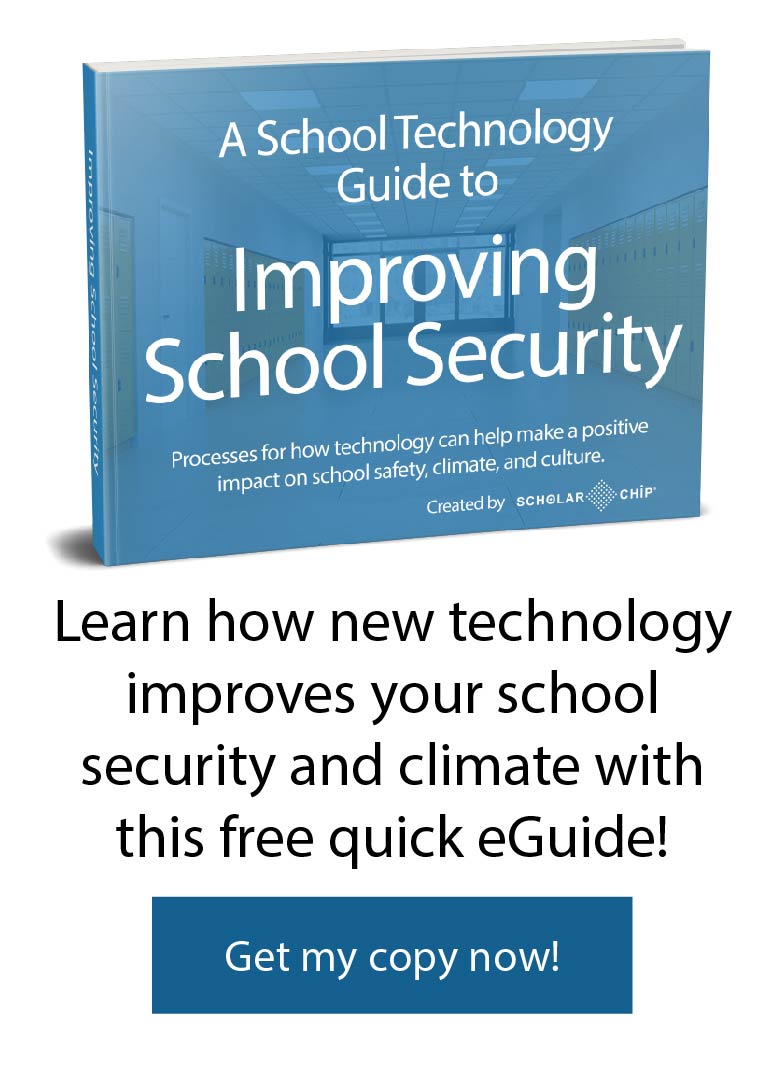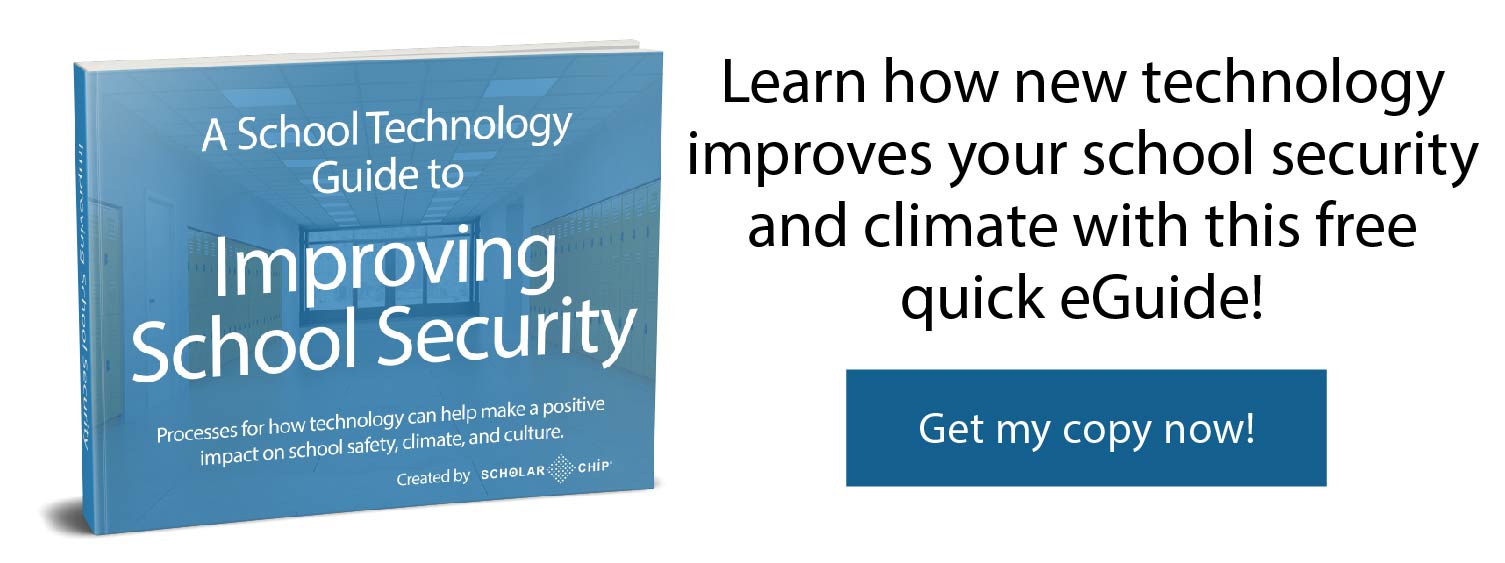In 2018, there was an average of one school shooting each week in the United States. As the threat of school violence has increased, so have the technologies that have been developed to deal with these issues. This decade in school threats is significantly different from years past, so the technologies your school deploys to confront these issues should be equally cutting-edge.
While many schools feel overwhelmed by overhauling their old school technology, updating your school’s safety technologies is simpler than you may believe. By choosing the most recommended technology, adding new technology gradually, and creating a reasonable budget, you can update your old school technology to proactively address issues before they become threats.
Here, we’ll go into why updating your old school technology for today’s world is more possible than you might think.
1. Schools do not need to make a radical overhaul of technology to make an impact.
Schools that need technology overhauls often believe that they have to make a radical change right away. This is not the case. Instead, each district and school has specific, individual problems that require solutions. Consider what most immediately needs to be addressed, and then continue to make changes year by year. Developing a long-term plan and tackling it bit by bit, in the shorter term can still make a significant difference.
2. More federal and state security grants have become available.
Planning and finding the funds in the budget for massive security overhauls is a significant concern to many districts. However, there are many grant opportunities becoming more available to savvy school districts that apply at the state and federal level.
The Department of Justice offers $25 million in grant funding annually through its School Violence Prevention Program, which will last until about 2028. Secure Our Schools (SOS) grants also became newly available in 2018, after a 10-year hiatus.
In Pennsylvania, Act 44 was signed into law in June of 2018. The act mandated the appointment of school safety and security coordinators, and created mandatory school safety training for employees as well. It helped develop a criteria to assess school safety and security along with establishing a registry of vendors for assessments. The grant administered is about $60 million in funding.
Other grants opportunities are becoming more available as the state and federal system become more aware of the dangers schools face with the growing population. Note, however, that many types of grant funding offer money for specific types of safety technologies or programs, like training school personnel. Depending on the type of old school technology overhaul you’re looking for, make sure your proposal fits into the type of funding offered.
3. Information can spread quicker than ever before.
Identification protocol for faculty, staff, and students is much more rigorous than the laminated name tags of years past. Now, identification technology is used to make sure that every person on campus is really meant to be there, and that students can more easily be accounted for if they’re supposed to be on the premises. Technologies like ScholarChip’s ID Manager offers more high-tech tracking of students. What’s more, these ID cards can be used by faculty and staff to limit access to off-limit areas of the campus, providing a more safe environment for students.
4. Perimeter security has evolved in the last ten years.
The Madison, Wisconsin metropolitan school district had a $6 million budget to help improve school safety in 2017. To start their program, they improved perimeter security by installing automatically-locking classroom doors, pin-pad, and ID access for all doors. These simple changes make it more efficient to lock down these classrooms in the event of a school shooting, or other dangerous event.
ScholarChip’s Secure Door Access provides an instant lock-down feature, as well as limiting access for certain users to only specific times of day.
5. Entry management systems provide added security.
With so many people moving on and off campus regularly, it’s important to keep track of who is meant to be on campus and who is not. The first proactive start, of course, is creating an entry control systems that can only be accessed by authorized users.
But the next step, then, is to have a single entry- and- exit point for more careful tracking of visitors. New visitors that could be potential threats are not always easily identifiable. Luckily, visitor management systems are sophisticated enough to screen new visitors through dedicated data. ScholarChip’s Visitor Management system scans visitor’s’ driver’s’ licenses against a reliable database, for example, the sex offender registry, before printing a badge for new visitor access.
6. Anonymous tip lines continue to prove effective.
Anonymous tip lines help students feel comfortable in reporting suspicious behavior without being called out by their peers. While anonymous tip lines may not always report erratic or dangerous behavior by students, they offer students a place to report other potentially dangerous behavior, like drug use, suicidal feelings, or bullying. The most credible and dangerous of reports on the tip line can then be reported to law enforcement for investigation. Anonymous tip lines are very inexpensive and can be easily setup across the school campus, wherever.
7. Progress has been made in spotting red flags in student behavior.
Students who commit violence against others have likely displayed inappropriate behavior in the past. However, with earlier iterations of technology, this behavior may not have been appropriately flagged or passed onto later-year staff and teachers. ScholarChip’s Alternative Behavior Educator (ABE) not only passes student behavior along across a child’s academic career, but also offers rewards and other incentives for appropriate classroom behavior. Teachers are then provided data-driven reports regarding their students and can possibly flag at-risk students.
8. Communication technologies are a feasible change for many districts.
Communication technologies, like walkie-talkies, intercoms, and radios, is a way for administrators, faculty, and staff to develop unified safety plans and stay in touch with one another when an incident might occur. These simple devices help schools prepare not only for school violence, but also for other types of drills that could help save lives in natural disasters or other extreme events. These communication systems are particularly helpful for large campuses, or those schools with many isolated or off-the-beaten-track areas.
9. Growing options for technology continue to make schools feel welcoming.
In a recent study by the RAND Corporation, many administrators feared implementing new technologies on campus because they didn’t want their campuses to feel unwelcoming. Technologies like metal detectors and X-Ray scanners were cited by many as “turning school environments into prisons.”
Luckily, there are still many technologies out there that avoid the daunting feeling of making their school feel like a prison. These include emergency alerts, identification technology, communication technology and behavior management technology, for starters.
While there are countless issues schools face when dealing with security, up-to-date technology help remedy majority of the safety issues that arise from bullying to kidnapping. The most important factor to keep in mind while drafting an updated safety plan is that different schools have different safety concerns. A rural school, for example, will have a hugely different agenda from one in an urban neighborhood. Whatever your most pressing concerns are, remember that updating your old school technology, planning, and procedures is a long-term, multi-year project to increase student and campus safety.
ScholarChip is an all-in-one, platform solution to help reduce school threats and address the important issues surrounding school safety. Data from students, faculty, and stakeholder are leveraged to manage school access, attendance, and behavior management through the platform tools to increase safety and promote the campus climate schools are looking for.
If you are looking to learn more about modern technology and how ScholarChip can help, contact us today for a 1-on-1 walkthrough on how we can help!


